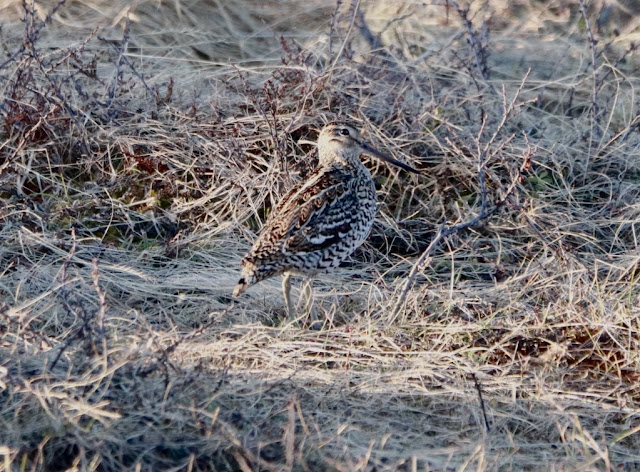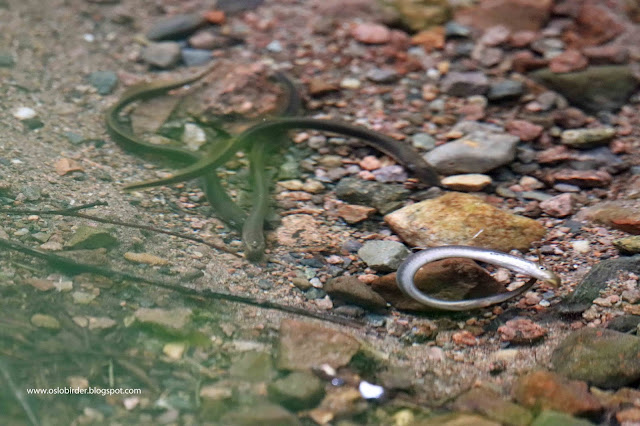Yesterday I burnt the candle at both ends. After my early morning visit to Valdresflye I HAD to check out the Great Snipe lek in the evening. Partly because I was tired but also with a hope that the snow would have delayed the start of lekking I went up early hoping for lots of testosterone fueled activity. I parked the car at 9pm (normally don’t go until 10pm) and walked towards the leksite. I heard multiple singing birds whilst the sun was still shining on the lek but my attention was taken by a nearby singing Cuckoo before I actually reached the lek. Then a Short-eared Owl appeared close by and then a Bluethroat sang next to me all whilst I was within 100m of the lek and hearing them. When I finally pulled myself away from the other distractions I realised that the sun was about to disappear behind a mountain (despite it being over an hour until sunset).
On approaching the lek I saw it was still mostly covered in snow and the birds were moslty calling from with vegetation around the lek site and were hidden. Eventually I was able to get to see birds well although only had one in sunshine. There were at least 7 birds with 5 males heard at the same time although one I filmed did not sing whilst others were so may have been a female.
I felt my tiredness creeping up though and decided to head for home before 2230. As I got to the car the first roding Woodcock appeared (normally I have these over the lek whilst I am waiting for it to kick off) and a Willow Grouse cackled. As I drove through the village a still partially white Hare fed on a field alongside two Golden Plover who had probably come down from the mountains where there can’t be much food to find yet.
Taking videos with the 600mm and 10x digital zoom made me realise how bad my tripod is as just a bit of wind produced terrible shake. The videos though will have to wait until I am at home and have the PC in front of me. In the mean time some quickly chosen still shots.
 |
| Great Snipe (dobbeltbekkasin) on the lek in sunlight but I was just a bit too far away |
 |
| Bluethroat (blåstrupe) |
 |
| Cuckoo (gjøk) |
 |
| Short-eared Owl (jordugle) |




















































